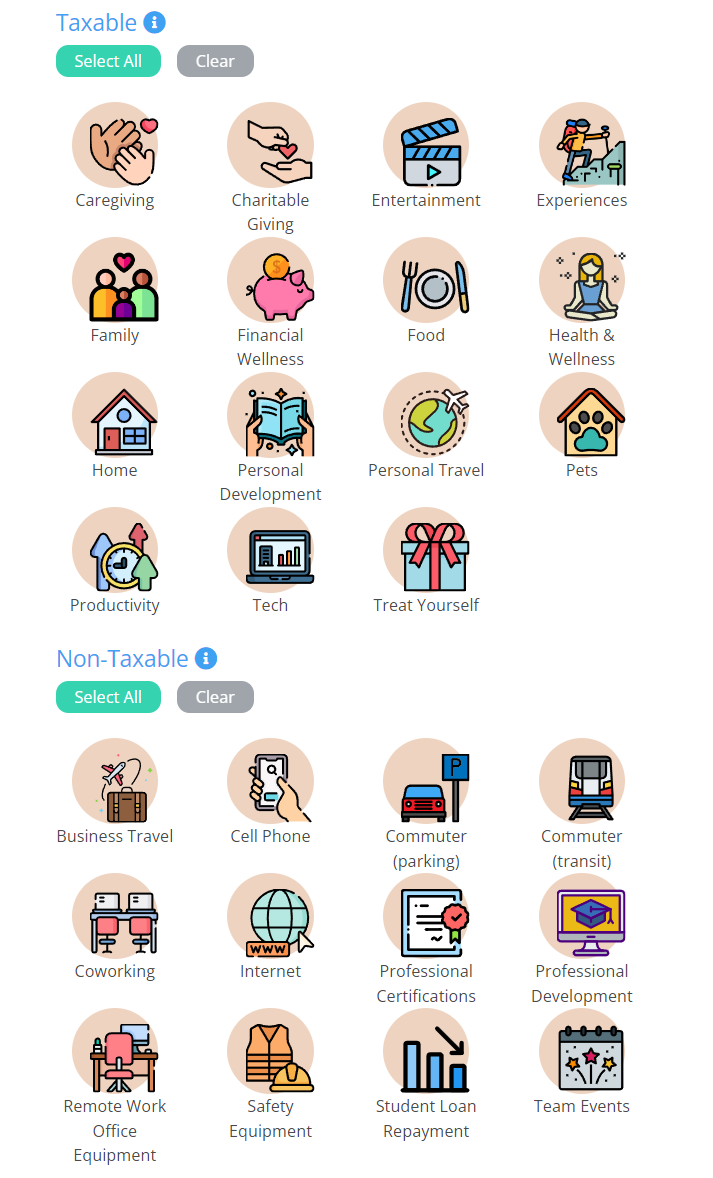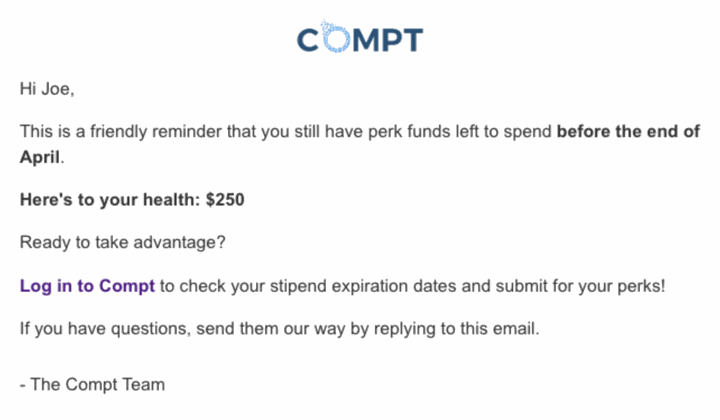We all know the importance of providing employee benefits to attract and retain top talent. But simply offering a comprehensive benefits package is not enough.
It is equally important for you to communicate and market the value of your benefits to your team and prospective employees, especially in a competitive job market.
Benefits communication can help workers understand what benefits are available to them and make them feel valued and supported by the organization.
In this blog post, we will discuss some strategies and tips on how to communicate employee benefits effectively.
Why is employee benefits communication important?
Offering comprehensive employee benefits is a great way to retain your workforce, but it won't matter if 42% of your employees still don't feel cared for.
Employee benefits are about supporting your people beyond the workspace by providing perks like health and wellness benefits.
Think of it as an opportunity to foster trust with your team and tell them you care.
Without properly communicating these benefits, employees typically don't use them, resulting in lower utilization rates.
Having an effective benefits communication strategy can promote employee retention, support their well-being, and enhance overall job satisfaction.
Best Practices to Effectively Communicate Employee Benefits
To build an effective strategy for communicating your employee benefits, there are five best practices companies need to account for.
1. Set business goals for employee benefits communication
Just as company objectives are driven by their goals, benefits communications should align with the company and HR initiatives.
When setting the goals for your communication, it can be helpful to consider what you want employees to know, feel, and do.
For example, you may want employees to understand the value of their benefits package, feel confident in their ability to use it effectively and take advantage of all the available options.
By structuring your goals this way, you can create a clear roadmap for your communication and ensure that it aligns with business objectives.
This will also help you achieve the desired outcomes and ensure that your employee benefits programs are well-utilized and appreciated by employees.
2. Tailor employee benefits to your audience
There is no one-size-fits-all approach when it comes to employee benefits. Employers need to take time to understand employees and their desired benefits.
That's why personalizing employee benefits based on employee experience is essential, even if you are only handling a small team of employees.
On top of traditional benefits like health care and retirement plans like 401(k)s, know that different motivations drive each employee.
Some may be looking for a professional development stipend, while others prioritize wellness benefits programs or family planning benefits.
Compt's employee stipend platform allows you to create stipends in 27 different categories (both taxable and non-taxable), giving employers the ultimate opportunity to personalize benefits.

The goal is to align your employee benefits with your team demographic and build offerings that cater to them.
3. Use various channels and formats to reach employees
When communicating benefits, it can also be helpful to use various channels and formats to reach employees where they are.
For example, employees in the deskless space (e.g., manufacturing, retail, hospitality) may not have regular access to a computer. In this case, posting flyers in highly trafficked areas may be more effective.
Others may prefer face-to-face meetings or access a company intranet. Internal communication videos are a good choice as they can be shared on the company intranet, during face-to-face meetings, or even through mobile platforms.
By identifying the most effective channels, you can create targeted messaging that can captivate the audience.
Your employee benefits offerings will be more likely read and retained by your employees, thus increasing their understanding of the benefits program.
Besides, using multiple channels creates more touchpoints for employees, reminding them of their available benefits and encouraging them to engage with the program.
With Compt, employees receive automated reminders to let them know what perks they have available within a certain timeframe.

4. Be clear and consistent in branding and messaging
Effective communication is all about clear and consistent messaging. This is especially crucial when communicating benefits programs that often involve technical information.
Using jargon and complex terms can confuse employees and make it difficult for them to understand the benefits available to them. To avoid this, it's vital to use simple writing strategies and straightforward language that everyone easily understands.
Visual aids such as infographics and charts can also help simplify information. These can be particularly useful when explaining complicated concepts such as health insurance or retirement plans.
Additionally, be consistent in your messaging. This means using the same terminology and explanations across all communication channels to avoid confusion or misunderstandings.
By focusing on clear and consistent messaging, you can improve employee awareness, allowing them to make informed decisions about their health, finances, and overall well-being.
5. Get employee feedback to provide insight
Communication is a two-way street. Inclusion is another key aspect of effective employee benefits communication.
Encouraging feedback and addressing any questions or concerns your employees may have is essential in ensuring they feel heard and valued.
By creating an open dialogue and providing opportunities for workers to provide feedback, it can build trust and strengthen the relationship between the employer and employees.
It also provides an opportunity to identify any confusion or misunderstandings, which can be addressed through additional communication or training. This only helps to improve the chances of your message being received by employees.
6. Create an ongoing conversation about your employee benefits package
Benefits communication should be ongoing throughout the year rather than a one-time event during onboarding.
Long emails could have been lost, and employees don't necessarily have it all memorized. That's why HR teams should make an effort to consistently remind employees about their benefits and keep them engaged with the offerings.
Furthermore, you can tailor your messaging to be relevant to current events or situations. For example, reminding employees about mental health benefits during a particularly stressful time or highlighting wellness benefits during cold and flu season.
Consistent communication about benefit offerings can also help to reinforce their value and encourage employees to take advantage of them.
Tips for Effective Implementation of Benefits Programs
Here are three additional tips to ensure your benefits communication efforts go smoothly.
1. Maintain open access to benefits information
Making information easily accessible and actionable is essential in promoting employee engagement with their benefits.
When staff can easily access their benefits information, they can efficiently find the resource and information they need. So take advantage of digital marketing tools that encourage benefits for employees in the workplace.
Mobile communications, for example, are an efficient way to connect employees. Promoting benefit messages through the news feeds of your app will increase engagement.
2. Engaging leaders and managers in communicating benefits
Encouraging leaders and managers to talk about benefits can be a powerful way to increase employee awareness and engagement.
Leaders and managers can help to create a culture of support for benefits and demonstrate the value of these offerings to their teams.
Providing managers with the necessary tools and resources is also essential in helping them effectively communicate benefits to their teams.
These resources can include benefits guides, FAQs, and training materials that can help managers answer questions and provide guidance to their team members.
Additionally, involving leaders and managers in the benefits selection process is a great way to increase their ownership and commitment to promoting these offerings.
When managers understand the rationale behind the benefits offerings, they are better equipped to communicate their value to their teams and encourage participation.
3. Measuring the effectiveness of benefits communication
Measuring the effectiveness of benefits communication efforts is crucial in ensuring that employees are fully informed and engaged with their benefits offerings.
Some ways to measure the effectiveness of benefits communications are:
- Interactions with communication efforts: Track blog post traffic, email click-through, open rates, and meeting attendance for employee benefits communication programs.
- Benefits engagement and usage metrics: Track open enrollment rates into health and wellness plans or usage of financial wellness budget. At Compt, our customers see an 90% average utilization rate.
- Discuss employee experience: Benefits discussion can extend well beyond enrollments, get employees to share their thoughts about the employee benefits package.
Finally, testing and evaluating the impact of benefits communication efforts on employee knowledge, attitudes, and engagement is essential in refining benefits communication strategies.
By regularly reviewing and analyzing data, HR teams can continuously improve the effectiveness of their communication efforts and ensure that employees are fully engaged with their benefits offerings.
Conclusion
HR teams must take a strategic and comprehensive approach to communicate employee benefits and compensation. So make sure to adopt these communication best practices and tips to promote a positive employee experience with your benefits offerings.
Interested in learning more about Compt? Click here to schedule a demo.
